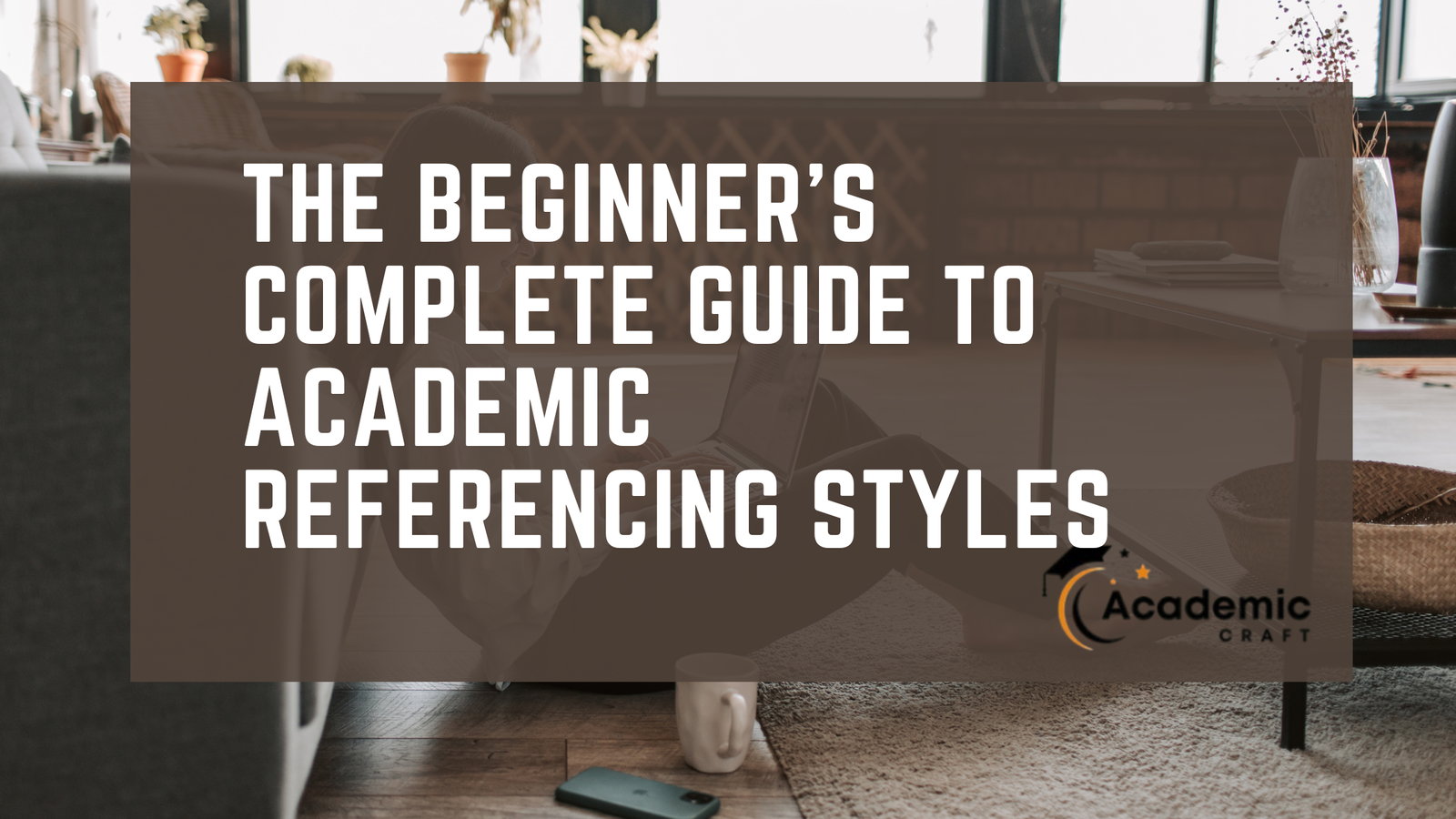If you’ve ever written a report, essay, or research project, you’ve likely come across the term Academic Referencing Styles. These are not just academic formalities. They are the backbone of credible writing. Referencing helps you give credit to authors whose ideas shaped your work, protect yourself from plagiarism, and show your reader that your research is well-grounded.
But with so many styles—APA, MLA, Harvard, Chicago, and others—many beginners get confused about which one to use or how to format them correctly. In this guide, you’ll learn what referencing styles are, how to choose the right one, and how to apply them step-by-step. By the end, you’ll not only understand the rules but also feel confident using them in your next paper or report.
What Are Academic Referencing Styles?
Academic Referencing Styles are systems that tell you how to credit other people’s ideas in your writing. Every time you quote, paraphrase, or refer to someone’s work, you must cite it. The goal is simple: show where your information came from and make it easy for others to find it.
There are three main systems of referencing:
- Parenthetical or Author-Date System: Used in styles like APA and Harvard. It places the author’s name and year of publication in parentheses, like (Smith, 2020).
- Numerical System: Used in technical and medical fields (for example, IEEE and Vancouver). Citations appear as numbers in brackets [1], referring to a numbered list.
- Notes or Footnote System: Used in humanities. You’ll find styles like Chicago or MHRA using footnotes at the bottom of the page.
Each system has its own rules, punctuation, and format. Choosing the right one depends on your field of study or institutional preference.
How to Choose the Right Referencing Style
Picking the right style can feel tricky at first. But it usually depends on your discipline or your institution’s requirements.
- APA Style is common in psychology, education, and social sciences.
- MLA Style is mostly used in literature, arts, and humanities.
- Harvard Style is widely used across disciplines, especially in the UK and Commonwealth countries.
- Chicago Style is popular in history, theology, and philosophy.
When in doubt, check your department’s handbook or your lecturer’s instructions. If you’re free to choose, pick a style that’s easy for you to manage consistently. For most students, APA or Harvard is a great starting point because they’re straightforward and supported by free online citation tools.
(For a breakdown of which styles fit which fields, visit Scribbr’s citation guide)
Key Academic Referencing Styles

Now, let’s look at the most popular Academic Referencing Styles and what makes each one unique.
1. APA (American Psychological Association – 7th Edition)
In-text citation:
Use the author’s last name and year. Example: (Brown, 2022). For direct quotes, add the page number: (Brown, 2022, p. 45).
Reference list:
At the end, include full details. Example:
Brown, P. (2022). Understanding Behavioral Patterns. Oxford University Press.
Why it is important:
APA is all about clarity and date relevance. Readers can instantly see how recent your sources are.
Common mistakes to avoid:
- Forgetting the year or page number for quotes.
- Capitalizing every word in the title (APA uses sentence case).
- Missing DOI links for online sources.
For detailed examples, visit the APA Style website.
READ ALSO: How to Write a Literature Review That Truly Impresses Your Supervisor: A Step-by-Step Guide
2. MLA (Modern Language Association – 9th Edition)
In-text citation:
Only the author’s name and page number. Example: (Miller 35).
Works Cited page:
Miller, James. The Art of Writing Clearly. Penguin Books, 2021.
Why it matters:
MLA emphasizes the author and page number, making it ideal for literary or textual analysis.
Common pitfalls:
- Missing page numbers.
- Forgetting to italicize book titles.
- Mixing “Works Cited” and “References.” (MLA uses “Works Cited”).
For more help, check the Purdue OWL MLA Guide.
3. Harvard Style
In-text citation:
(Author, Year) – similar to APA. Example: (Ahmed, 2020).
Reference list:
Ahmed, R. (2020). Market Research Techniques. London: Routledge.
Key difference:
Harvard has variations. Universities often tweak punctuation or layout. Always check your institution’s guide.
Tip: Harvard referencing is one of the easiest to learn, but consistency matters.
For more details, explore University of Reading’s guide.
4. Chicago (Turabian) Style
Two versions:
- Notes and Bibliography System: Footnotes + a bibliography.
Example (footnote): 1. Peter Adams, History of Modern Africa (Oxford: OUP, 2020), 22. - Author-Date System: In-text like Harvard: (Adams, 2020).
Why it is important:
Chicago is detailed and flexible, perfect for research that involves many primary sources.
Mistake to avoid: Mixing both versions in one paper. Stick to one.
For a free reference guide, visit Chicago Manual of Style Online.
5. Other Common Styles (Quick Overview)
- IEEE: Uses numbered references in brackets [1]. Common in engineering.
- Vancouver: Used in medicine and health sciences.
- OSCOLA: Standard in law, uses footnotes.
- ASA: Sociology, uses author-date like APA.
These systems follow the same idea: be clear, consistent, and traceable.
Handling Tricky and Modern Sources

Modern research isn’t limited to books and journals anymore. Students often use podcasts, YouTube videos, and even AI-generated tools like ChatGPT. Here’s how to cite them correctly:
- Websites: Include author (if known), date, title, and full URL. (Johnson, 2023, “Marketing in Africa,” https://example.com).
- Social Media: Include the handle, year, and post details. (@InsightIQHub, 2025).
- Podcasts / YouTube: Include creator, date, episode/video title, and link.
- AI Tools: Mention the tool name and date accessed, e.g., “ChatGPT, version of March 2025, OpenAI.”
Always aim for clarity and transparency. If someone else reads your paper, they should easily locate your source.
READ ALSO: How to Choose the Perfect Master’s Thesis Topic (Even If You’re Confused)
Common Mistakes and How to Avoid Them
Even experienced students make citation errors. Here are the top ones to avoid:
- Mixing two academic referencing styles in one paper.
- Forgetting page numbers in direct quotes.
- Copying citations directly from online generators without checking accuracy.
- Leaving URLs broken or missing DOIs.
- Not listing all authors when a rule says “up to six.”
Always cross-check with official style guides
Tools to Make Referencing Easier
You don’t need to memorize every rule. There are excellent tools that make referencing a breeze:
- Zotero: Free and great for managing large libraries.
- Mendeley: Helps store PDFs and auto-generate citations.
- EndNote: Professional-level tool for advanced researchers.
- BibGuru or Citation Machine: Fast generators for students.
However, always check the output manually. No tool is perfect, and incorrect punctuation can cost you marks.
Mini Cheat Sheet
| Style | In-Text Example | Reference Example |
|---|---|---|
| APA | (Smith, 2021) | Smith, J. (2021). Digital Learning Tools. Oxford University Press. |
| MLA | (Smith 21) | Smith, John. Digital Learning Tools. Oxford University Press, 2021. |
| Harvard | (Smith, 2021) | Smith, J., 2021. Digital Learning Tools. Oxford: OUP. |
| Chicago | 1. Smith, Digital Learning Tools (Oxford: OUP, 2021), 21. | Smith, John. Digital Learning Tools. Oxford: Oxford University Press, 2021. |
Keep this table handy when writing your next paper.
READ ALSO: Top 20 Master’s Thesis Defense Questions (and Exactly How to Answer Them)
Conclusion
Mastering academic referencing styles takes patience, but it’s one of the best skills a student or researcher can learn. The key is consistency. Once you pick a style, stick to it throughout your work. Use verified sources, follow your department’s guide, and double-check every reference before submission.
Remember, referencing is not just about avoiding plagiarism. It’s about showing integrity and respect for others’ ideas. Start small, keep learning, and you’ll soon find referencing as natural as writing itself.
If you want more step-by-step writing help, send us a message. We’re your partner for stress-free academic writing support.



